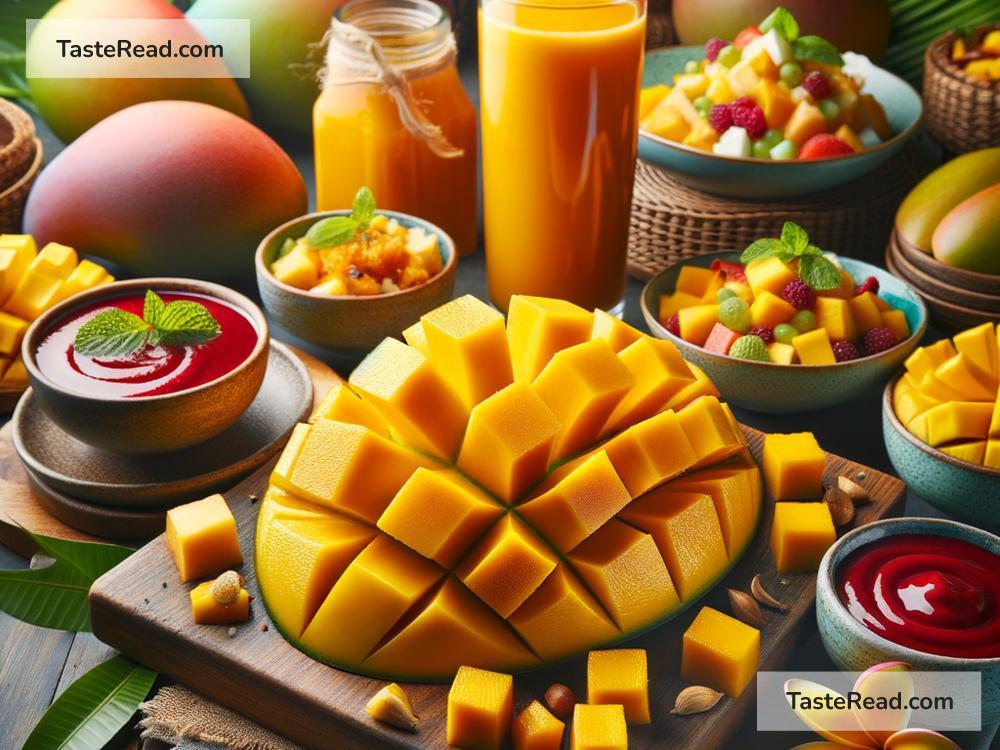The Secrets Behind the King of Fruits: Mango
Mangoes are not just fruits; they are a delightful gift of nature, often called the “King of Fruits.” Loved by millions around the world for their sweetness, vibrant color, and juicy texture, mangoes are much more than just a tasty treat. Behind their luscious flavor lies a fascinating story of history, health benefits, and cultural significance. In this article, we’ll explore the secrets of this amazing fruit, its origins, varieties, and why it holds such a special place in our hearts.
A Fruit with a Royal History
Mangoes have been cultivated for thousands of years. Their origins can be traced back to South Asia, particularly India and Southeast Asia, around 4000 years ago. Ancient Indian texts often refer to the mango as “Amra,” highlighting its importance in culture and spirituality. The mango tree itself has been considered sacred in India, and its leaves are often used in rituals and ceremonies as a symbol of prosperity and good luck.
It is said that the Mughal emperors were especially fond of mangoes. Emperor Akbar, one of India’s most famous rulers, planted over 100,000 mango trees in a place called “Lakhi Bagh” in Uttar Pradesh. Mangoes were not just a fruit but a royal delicacy. Today, this fruit continues to be celebrated, and it is a favorite across tropical and subtropical regions of the world.
An Explosion of Varieties
Did you know there are hundreds of mango varieties? Each type has its unique flavor, size, and texture. From Alphonso to Tommy Atkins, each name represents a distinct mango experience.
In India, Alphonso mangoes are the most popular, often called the “King of Mangoes.” They are known for their golden color, creamy texture, and sweet taste. In the Philippines, Carabao mangoes are highly prized for their sweetness. In Mexico, Ataulfo mangoes, small and buttery, are a favorite among locals. Other popular varieties include Haden, Kent, Kesar, and Langra.
The diversity of mangoes is truly astonishing. Depending on where you are in the world, you may taste a mango that is sweet, tangy, firm, or soft. Mango lovers enjoy debating which variety reigns supreme, but one thing is sure: there’s a mango for everyone.
Why Mango Is a Superfood
Beyond its flavor, mangoes are packed with nutrients that make them a superfood. They are a rich source of vitamins, especially Vitamin C and Vitamin A, which help boost the immune system, protect your eyesight, and give your skin a healthy glow. Mangoes also contain antioxidants like beta-carotene, which help fight free radicals in the body and reduce the risk of chronic diseases.
Mangoes are also a good source of dietary fiber, which aids digestion and prevents constipation. Surprisingly, they contain enzymes such as amylase, which help break down complex carbohydrates into simple sugars, making digestion smoother.
For those watching their weight, mangoes are a low-calorie snack when eaten in moderation. Despite their natural sweetness, they are free of artificial sugars, making them a healthy alternative to sugary desserts.
Cultural Significance of Mangoes
Mangoes hold a special place in the cultures of many tropical countries. In India, mangoes symbolize love and abundance. During the summer season, families often gather to enjoy mangoes in various forms—whether sliced, blended into smoothies, or turned into desserts like mango ice cream or mango lassi. Mango festivals, celebrated in many regions, highlight the excitement surrounding this majestic fruit.
In Southeast Asia, mangoes are paired with sticky rice and coconut milk—a dish that has gained worldwide fame. In Latin America, mangoes are enjoyed with chili powder and lime, creating a perfect balance of sweet, sour, and spicy flavors.
Mangoes also appear in religious symbolism. In Hindu mythology, the god Ganesha is often depicted holding a ripe mango, representing perfection. Mango trees are believed to bring positive energy and are planted around homes for good fortune.
Secrets of Mango Farming
Producing the perfect mango is no easy feat. Mango farmers work tirelessly to ensure their fruits are sweet, juicy, and flavorful. Mango trees require plenty of sunshine, warm temperatures, and well-drained soil to thrive. Farmers often wait patiently for months as mangoes ripen on the trees, achieving their signature taste naturally.
Many mangoes are still harvested by hand to prevent bruising, keeping the fruit intact and delicious. Exporting mangoes requires special care since they are delicate and must be protected during transportation.
Fun Facts About Mangoes
- Mangoes are the national fruit of India, Pakistan, and the Philippines.
- A single mango tree can live for over 100 years!
- Mangoes belong to the same family as cashews and pistachios.
- The Guinness World Record for the heaviest mango is 4.25 kilograms (9.36 pounds).
Conclusion: The Mango’s Timeless Appeal
Mangoes are more than just a fruit—they are a symbol of joy, culture, and health. Whether eaten fresh, dried, or turned into a variety of dishes, mangoes always bring a touch of sweetness into our lives. The secrets behind the king of fruits reveal how history, science, and tradition come together to create something truly remarkable.
So, the next time you bite into a juicy mango, remember that you’re enjoying a fruit with ancient roots, nutritional power, and a rich cultural legacy. Truly, mangoes deserve their crown as the King of Fruits!


